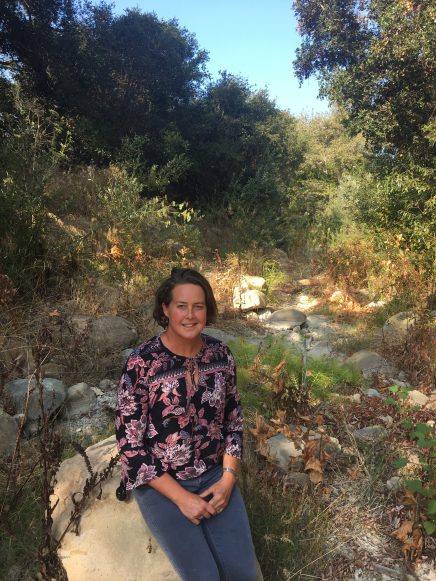The state Coastal Commission made short shrift of an appeal of the Cresco California cannabis project on Foothill Road this week, unanimously finding that it raised “no substantial issue” that would require a fresh review of the company’s zoning permit.

The vote of the 12-member commission via Zoom on Thursday leaves in place the county Board of Supervisors’ December 7 approval of the Cresco project — 7.5 acres of cannabis cultivation in greenhouses and a 25,000-square-foot processing building at 3861 Foothill Road, on property owned by Rene Van Wingerden. It is one of the largest “grows” in the Carpinteria Valley; Cresco Labs Inc., a publicly traded company based in Chicago, is one of the fastest-growing cannabis companies in the world, with cultivation and retail operations in 10 states.
“We’re not here today to adjudicate the process of cannabis permitting in Santa Barbara County, broadly,” said Santa Barbara Mayor Pro Tem Meagan Harmon, who was appointed to the commission by Gov. Gavin Newsom last May with support from Concerned Carpinterians, a group that has quixotically sought stiffer regulations for the burgeoning industry in their midst.
Thursday marked the first time that a cannabis project in the valley had appeared on the Coastal Commission’s agenda; the project was “appealable” to the state panel because portions of it lie within 100 feet of a natural creek, Arroyo Paredon.
Maureen Foley Claffey, a Foothill Road resident, filed the appeal: Her family owns an avocado orchard next to Cresco and has been filing complaints to the county about the “skunky” odor of pot from the open-vented greenhouses for more than three years. Claffey argued that smelly cannabis gases and the curtain of mist emitted by the “vapor-phase” pipes encircling the greenhouses, a system designed to “neutralize” the smell of pot, would harm rare plants and fish, including steelhead trout, in Arroyo Paredon, a creek habitat that the county has designated as “environmentally sensitive.”
But the commission staff characterized these claims as “speculative” and lacking in evidence. Steve Hudson, director of the commission’s South Central Coast district, noted that Cresco would “pull further back from the creek” by removing a parking lot and an old avocado orchard within the 100-foot buffer. Cresco also is required to restore more than an acre of land near the creek with native vegetation.
Harmon said, “The fact that we are actually doing more repair work through this project is very important to me.” At the same time, she praised Claffey and other residents who filed dozens of appeals as the valley’s flower greenhouse industry converted to cannabis in recent years, saying that they “have really played an important watchdog function in our county and I think our processes have been all the better off for it.”
In an interview, Claffey, a member of Concerned Carpinterians, said she was disappointed with the Coastal Commission’s vote and what she called the “chronic pass-the-buck-ism at every jurisdictional level,” adding, “It has shown me that when bad policy is allowed to be put into place and there’s a lack of enforcement, the incentive is to do as little as possible to change things.”
“It’s time to go back to the drawing board and craft better policy and create better enforcement actions,” Claffey said.
In 2019, Claffey filed — and lost — the first appeal of a cannabis project in the valley, against Glass House Farms, an eight-acre greenhouse operation at 3561 Foothill owned by Graham Farrar. Claffey argued that Farrar should be required to install carbon filters called “scrubbers” inside the greenhouses, not vapor-phase systems around the perimeter, to more effectively get rid of the smell of cannabis.

Two years later, CARP Growers, an industry group representing the owners of 21 greenhouse properties, including Cresco and Farrar, signed an agreement with the Santa Barbara Coalition for Cannabis, a countywide citizens’ group, pledging to install “best available odor-control technologies” — now widely believed to be carbon scrubbers.
On Thursday, a representative of Cresco Labs reminded the commission of this pledge and added that the firm would eliminate the use of the vapor-phase system “to the maximum extent feasible.”
The Cresco project, Claffey said, “is a thousand times better than when they first brought it to the table.… I’m taking that as a win for everybody.”
Melinda Burns is an investigative journalist with 40 years of experience covering immigration, water, science, and the environment. As a community service, she offers her report to multiple local publications, at the same time, for free.
Support the Santa Barbara Independent through a long-term or a single contribution.

